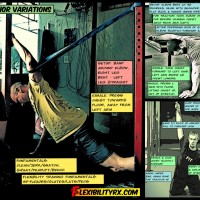
Pectoralis Minor Stretch
Pec-Minor is chronically tight amongst many athletes. Tightness can limit shoulder flexion range of motion for overhead lifts as well as pull the shoulder blade into a disadvantageous position. The pec-minor overhead band stretch was covered here. This is a nice alternative for coaches to use with a group class when space doesn’t permit for the traditional bench stretch variation or a stretch on an exercise (swiss) ball. Pec-Minor Stretch Version 1 The overhead pec-minor stretch allows for a lot of shoulder traction, which eliminates pinching in the back of the shoulder that is common with pec-minor stretches.
Pec-Minor Stretch Version 2 The traditional kneeling pec-minor stretch (as taught by Stretch-to-Win®) is a great option for individual gym members to use on their own. A swiss ball is preferable, because it allows the elbow to be hooked onto the ball before leaning the chest away from the elbow for shoulder traction. Instead, a pad can be placed on a bench (or box of appropriate height) to hook the elbow. To stretch the right pec, for example, you would move the elbow left on the pad for friction so that it is pulled to the right, once you lean the torso away to the left. You would then exhale, and drop the chest down to the floor for the stretch, using the left hand for support.
Pec-Minor Stretch Version 3 This is an innovative way to stretch pec-minor from a slightly different angle, using a band to create space (traction) in the shoulder joint. Jon Lempke, instructor for Stretch-to-Win® helped me come up with this alternative that can be used, if version 1 (overhead stretch) is not tolerated well.
Finding the Right Version of a Stretch While certain stretches lend themselves to ‘best’ positions, it is always important to consider the need for different versions of stretches for different athletes. The quad stretch on the floor, for example, is a nice alternative to the quad wall stretch that is commonly used – it is less intense and can be used by athletes with tightness in the shin and ankle.
Stretching Different Fiber Directions & Planes of Movement It is also important to stretch fascia not just muscle – by using the different angles and planes of movement for the three pec-stretches, athletes will be able to target all of the fascia of pec-minor and find the stretch that best suites their needs. – Kevin Kula, “The Flexibility Coach” – Creator of FlexibilityRx™
Tags: Core-Four Upper, overhead flexibility, Pec-Minor Stretch, Pectoralis-Minor Stretch, scapula, shoulder blade, tight chest stretch, tight pecs
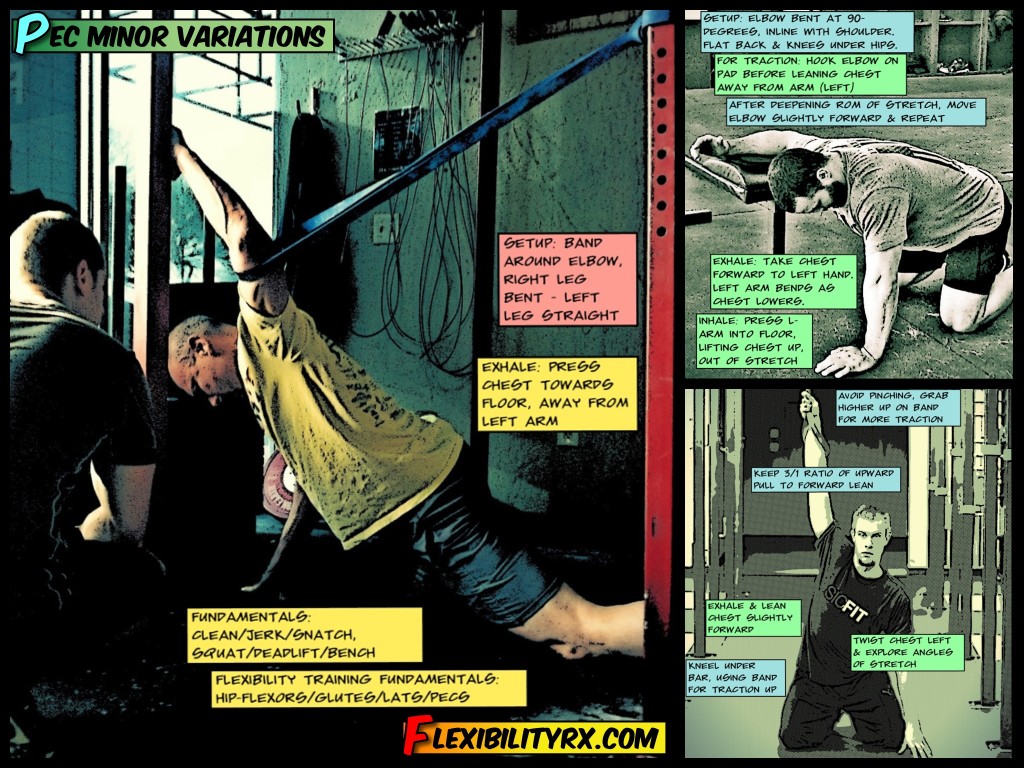
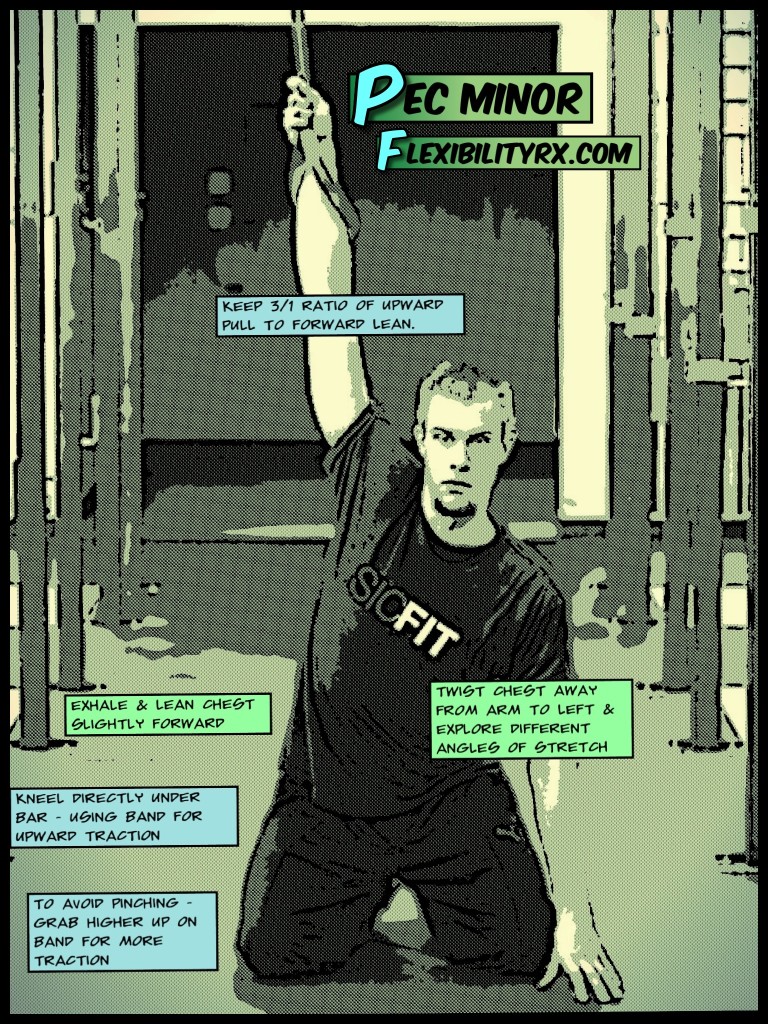
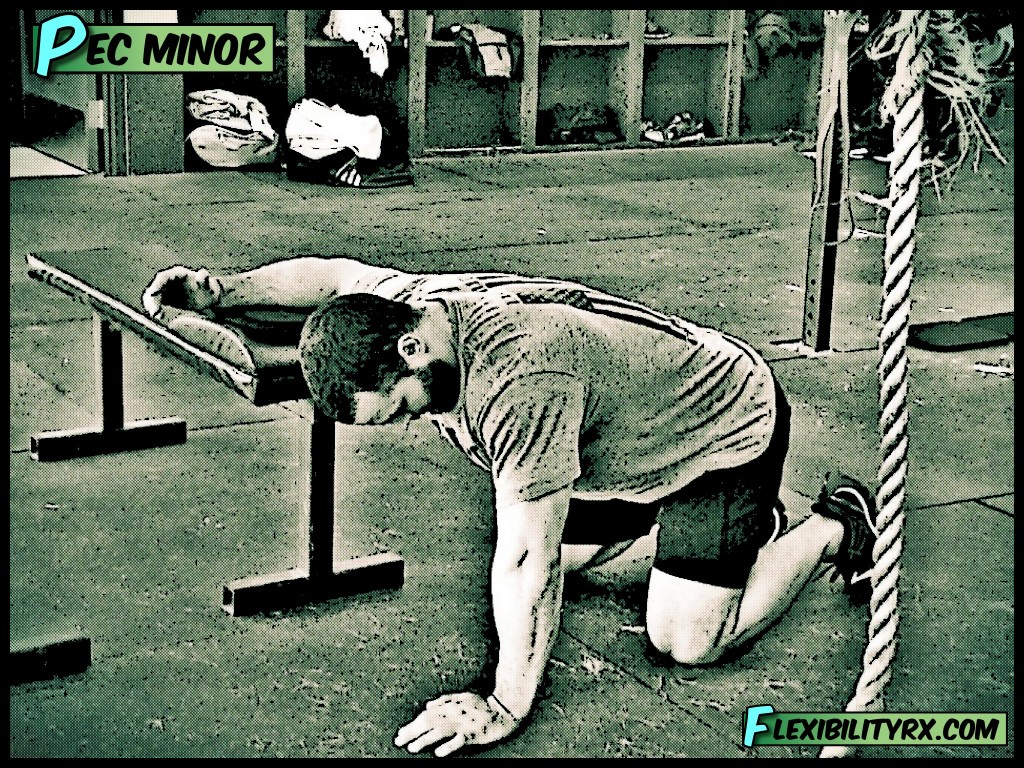
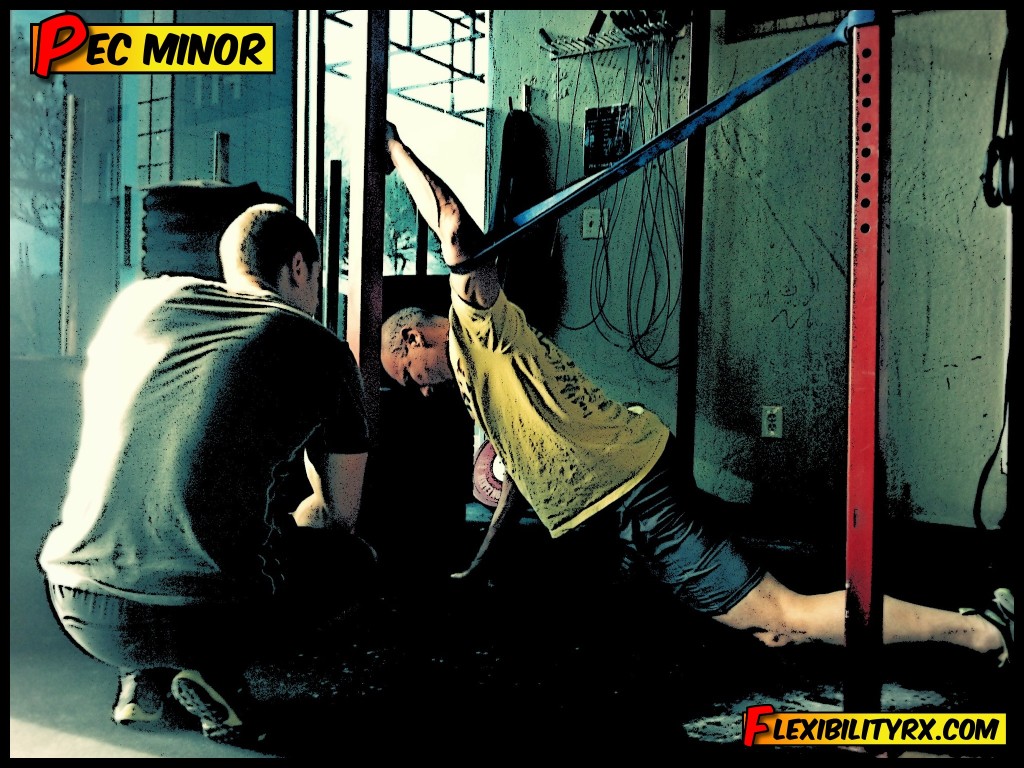
Leave A Reply (No comments so far)
You must be logged in to post a comment.
No comments yet